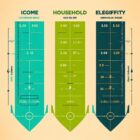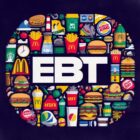What Does SNAP Mean – SNAP Eligibility and Benefits

Thanks to the Supplemental Nutrition Assistance Program (SNAP), millions of low-income households in the US can combat hunger and poor diet. The program provides monthly benefits to qualifying individuals and families to buy eligible food items.
But what does SNAP mean, exactly? How much aid can you get from the program, and how do you qualify for it? Keep reading as we provide answers to these and more questions.
What Does SNAP Mean?
SNAP is a federal program that provides food-buying assistance to low-income individuals and households. Previously known as the Food Stamp Program, SNAP provides monthly benefits based on income, household size, and resources.
The program encourages participating households to spend more on food. This helps boost the local economy, as it can lead to an appreciable increase in retail sales, particularly in areas with many SNAP participants.
While the amounts that households can receive in benefits are the same in the 48 contiguous states and the District of Columbia, it differs in Hawaii, Alaska, and some US territories.
Who Is Eligible for SNAP?
To qualify for SNAP, your household income must meet certain gross and net income limits (although households with disabled or elderly persons are exempted from the gross income limit).
Typically, households must meet the following criteria to qualify for SNAP:
- Have a gross income at or less than 130% of the federal poverty line
- Have a net income less than or equal to 100% of the federal poverty line
- Have countable resources (such as money in the bank or cash at hand) not greater than $2,750. The amount should not be more than $4,250 for households with a disabled or elderly person aged 60 and above.
The good news is that some assets are not considered when determining SNAP eligibility. Some of these resources include:
- Resources from Supplemental Security Income (SSI)
- Most pension plans and retirement benefits
- Landed properties (a lot or home)
What Documents Are Required to Apply for SNAP?
You will need certain documents when applying for SNAP. Although documentation may vary slightly between states, the documents below are commonly requested:
- Proof of identity and age (state-issued ID, driver’s license, passport, and birth certificate)
- Proof of income (bank statement, self-employment bookkeeping records, pay stubs, agency letter showing unearned income)
- Proof of social security number (social security card)
- Proof of citizenship or immigration status (US passport, permanent resident card, military records)
- Child care expenses, where applicable
- Proof of medical expenses for disabled applicants or those over 60
How Much Can You Receive in SNAP Benefits?
The total amount you can receive in SNAP benefits every month (known as allotment) depends on the number of people in your household and where you live.
Allotments per household are not static; they change to reflect yearly cost-of-living adjustments. Here is the maximum monthly allotment for different household sizes effective from October 1, 2002:
- Household of 1: $281
- Household of 2: $516
- Household of 3: $740
- Household of 4: $939
- Household of 5: $1,116
- Household of 6: $1,339
- Household of 7: $1,480
- Household of 8: $1,691
- Larger households: $211 for each additional person
The allotment differs for SNAP participants in Hawaii, Alaska, Guam, and the US Virgin Islands. You can find monthly allotments for various household sizes here if you live in any of these places.
What Can You Buy With SNAP Benefits?
SNAP distributes benefits or funds to participants each month via Electronic Benefits Transfer (EBT) cards. These cards look like regular debit cards, so shopping with them reduces the stigma often associated with food stamps.
The primary items a user can purchase with a SNAP benefit are food items, such as:
- Fruits and vegetables
- Seafood
- Poultry, meat, and fish
- Dairy products
- Bread and cereals
- Seeds and plants
- Ground coffee, coffee beans, instant coffee, and single-serve coffee container pods
- Soft drinks, ice cream, snack crackers, cookies, candy, and other non-alcoholic beverages
Keep in mind that certain foods and drinks, as well as household items, cannot be purchased with SNAP benefits. For example, you are not allowed to use your EBT card to pay for the following:
- Pet foods
- Household supplies, cosmetics, and hygiene items
- Alcoholic beverages and all forms of tobacco
- Medicines, vitamins, and supplements
- Live animals
- Foods that are meant to be consumed on the spot, such as hot coffee
Why You Should Consider SNAP
Now that we’ve answered the question, “What does SNAP mean?” and seen how to qualify for the program, you may wonder if you really need the assistance program.
You should consider applying for SNAP if your household income is low. This government assistance can help you buy nutritious foods to keep your family healthy. Also, you can buy certain things many people don’t know are possible to purchase with food stamps.
Besides, if you have a disability that limits your employment opportunities or makes it challenging to earn enough income, applying for SNAP can be a lifesaver. Being able to afford good foods can boost your health and checkmate obesity, heart disease, diabetes, and other diseases common among people with disability.
You may already receive some disability benefits like Supplemental Security Income (SSI) payments and Social Security Disability Insurance (SSDI). Still, you have a better chance of qualifying for SNAP if you are on disability, and combining these benefits can significantly improve your purchasing financial status.
How to Apply for SNAP
The quickest way to apply for the benefits program is by visiting your local SNAP benefit website and filling out an application form. Each state’s application form is different, so it is important to fill out the form for your state.
Check out this government webpage to find your state’s SNAP website. You should reach out to your local SNAP office to request an application form if you can’t find your state’s form on the web.
Keep in mind that although SNAP is a federal program, it is administered by individual states. This means you must contact your local SNAP office to apply for benefits.
Bottom Line
What does SNAP mean? It is a federal government anti-hunger program designed to help low-income families in the US afford healthy food. Eligible households can leverage the program and shop for healthy food items, even when they travel to other states.



